Welcome to the essential guide on how to trim your cat’s claws! If you’ve ever wondered how to tackle this feline grooming task without a scratch-fest, you’re in the right place. In this article, we’ll walk you through the art of cat claw maintenance. We’ll cover why it’s crucial, the tools you’ll need, and provide a step-by-step guide to make the process as smooth as a saucer of milk. Plus, we’ll throw in some tips for calming anxious kitties, handling potential accidents, and maintaining a regular claw care routine. And for those who prefer alternatives or might need professional help, we’ve got you covered. Let’s get those claws in tip-top shape, shall we?
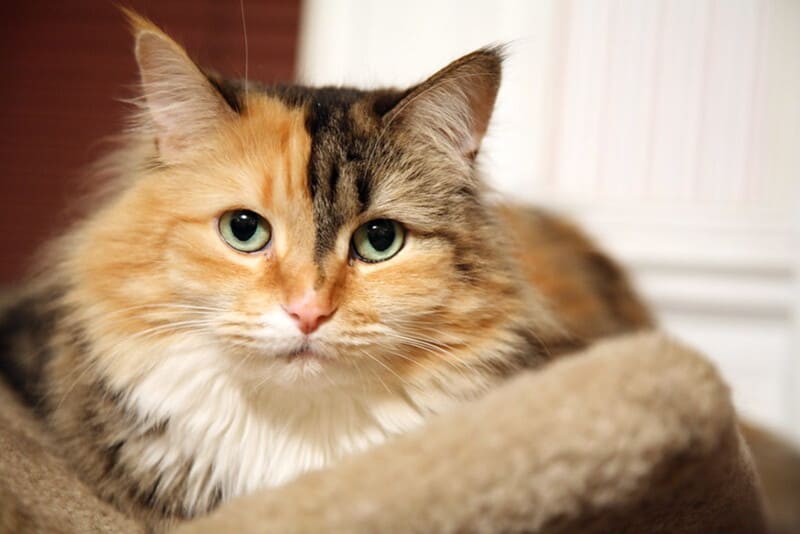
Understanding the Importance of Claw Maintenance
Why Do Cats Need Claw Maintenance?
Cats are born with a natural set of tools – their claws. These retractable weapons serve various purposes, including self-defense, hunting, and even climbing. However, they also grow continuously, which means they can become too long and cause problems for your feline friend. Overgrown claws can lead to discomfort, health issues, and damage to your furniture.
So, why is claw maintenance important?
- Preventing Pain and Discomfort: Overgrown claws can curve into your cat’s paw pads, causing pain and discomfort with every step.
- Maintaining Mobility: Properly trimmed claws enable your cat to move comfortably, climb, and jump with ease.
- Protecting Your Home: Cats with well-maintained claws are less likely to scratch furniture, curtains, or your favorite sweater.
- Reducing the Risk of Injury: Trimmed claws are less likely to get snagged in carpets or fabrics, reducing the risk of injury.
- Preventing Infections: Overgrown claws can break or split, providing an entry point for infections.
When and How Often Should You Trim?
The frequency of claw trimming depends on your cat’s lifestyle and age. Indoor cats typically need more frequent trimming than outdoor cats because their claws don’t wear down naturally. On the other hand, kittens and senior cats may need special attention due to their specific needs.
- Kittens: Young kittens tend to retract their claws less efficiently and can scratch unintentionally. Regularly inspect and trim their claws, but be gentle.
- Adult Cats: Most adult cats benefit from claw maintenance every 2-4 weeks. Check their claws regularly and trim when necessary.
- Senior Cats: Older cats may have brittle claws that require a delicate touch. Trimming may be needed every 2-3 weeks.
Gathering the Essential Tools for Safe Trimming
What Tools Do You Need for Claw Trimming?
Before you embark on your cat’s claw-trimming journey, it’s essential to gather the right tools. Having the proper equipment makes the process smoother, safer, and less stressful for both you and your feline companion.
Here’s what you’ll need:
1. Cat-Specific Claw Clippers
Invest in a good pair of cat claw clippers. These clippers are designed for the purpose, making it easier to cut through the tough keratin of a cat’s claws. Scissor-style or guillotine clippers work well, so choose the type you’re most comfortable with.
2. Styptic Powder or Gel
Accidents happen, and you may cut too close to the quick, causing bleeding. To have a quick remedy on hand, get some styptic powder or gel. Applying it to the cut stops the bleeding and prevents infection.
3. Treats and Positive Reinforcement
To create a positive association with claw trimming, have some cat treats or your cat’s favorite toy ready. Rewarding your feline friend during and after the process can help reduce anxiety and stress.
4. A Comfortable Setting
Choose a quiet and well-lit area where you and your cat can feel relaxed. Use a non-slip surface, like a towel or mat, to secure your cat during the trimming process.
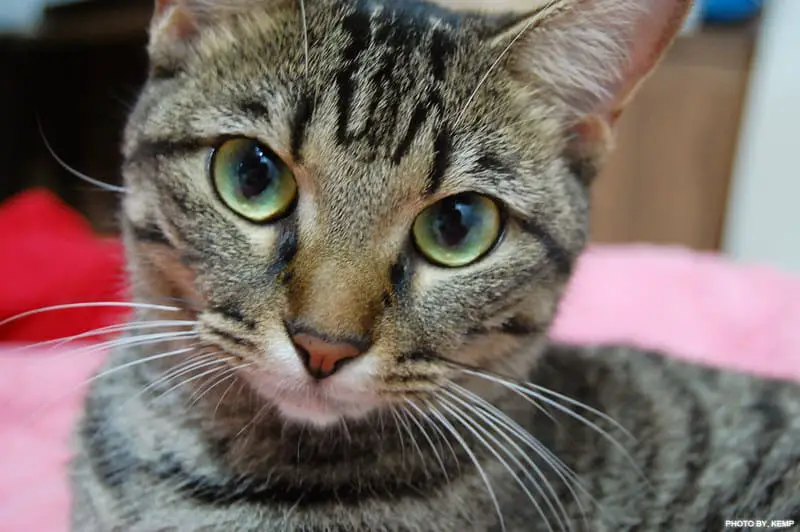
Safety Precautions
Before you start trimming your cat’s claws, it’s important to be aware of a few safety precautions:
- Be Gentle: Handle your cat with care, ensuring they’re relaxed and comfortable before you start.
- Avoid Cutting the Quick: The quick is the pink area inside the claw that contains blood vessels and nerves. Cutting it can be painful and cause bleeding. Trim just the sharp, translucent tip of the claw.
- Take Breaks: If your cat becomes agitated, don’t force the process. Take breaks and try again later.
- Enlist a Friend: If you’re unsure or your cat is particularly difficult, consider enlisting the help of a friend or a professional groomer.
With the right tools and safety measures in place, you’ll be well-prepared to trim your cat’s claws safely and effectively.
Step-by-Step Guide: How to Trim Your Cat’s Claws
Preparing for Claw Trimming
Before you start trimming your cat’s claws, it’s crucial to prepare both yourself and your feline friend. Follow these steps to ensure a smooth process:
1. Gather Your Tools
Make sure you have the essential tools we discussed earlier: cat claw clippers, styptic powder or gel, treats, and a comfortable setting.
2. Relax Your Cat
Spend some time petting and playing with your cat to help them relax. A calm cat is easier to work with. If your cat is exceptionally anxious, consider using Feliway or a calming spray designed for cats.
The Claw Trimming Process
Now, let’s dive into the step-by-step process of trimming your cat’s claws:
3. Positioning Your Cat
Place your cat in your lap or on a non-slip surface. Gently hold one paw in your hand, applying light pressure to extend the claw.
4. Identifying the Quick
Examine the claw and look for the quick, the pink area near the base. Be careful not to cut into it. Trim only the translucent tip of the claw.
5. Making the Cut
Using your cat claw clippers, snip the tip of the claw. Make a quick, clean cut to avoid splintering or crushing the claw. If your cat gets agitated, take a break and try again later.
6. Repeat for Each Claw
Continue the process for all the claws, one paw at a time. Remember to reward your cat with treats or positive reinforcement after each paw.
7. Using Styptic Powder
If you accidentally cut the quick and your cat’s claw starts bleeding, don’t panic. Apply a small amount of styptic powder or gel to stop the bleeding. Be gentle and reassure your cat.
8. Finishing Up
Once all the claws are trimmed, give your cat some extra love and treats as a reward. It’s a great way to create a positive association with claw maintenance.
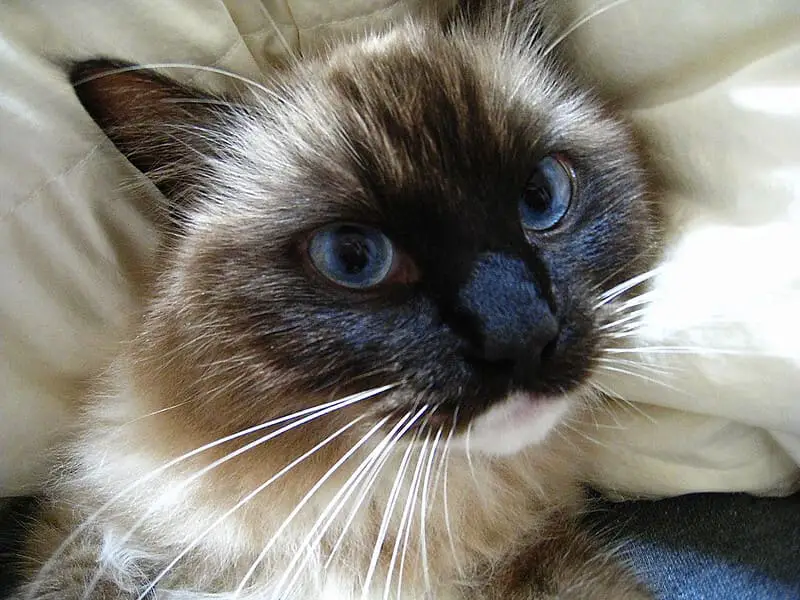
Tips for Calming an Anxious Cat Before Trimming
Trimming your cat’s claws can be a nerve-wracking experience for both you and your feline friend, especially if they’re prone to anxiety. Here are some tips to help calm your cat before the trimming process:
1. Familiarization
Let your cat get accustomed to the tools you’ll be using. Allow them to sniff the clippers and explore them without the intent of trimming. This can reduce the fear of unfamiliar objects.
2. Positive Association
Create a positive association with claw trimming. Use treats or a favorite toy to reward your cat during and after the process. Over time, they’ll learn to associate claw maintenance with something pleasant.
3. Gradual Introduction
If your cat is extremely anxious, introduce them to the process slowly. Start by touching their paws gently and progress to holding them. Gradually build their tolerance for the procedure.
4. Calming Aids
Consider using calming aids like Feliway diffusers or calming sprays in the room where you’ll be trimming your cat’s claws. These products release pheromones that can help reduce anxiety.
5. Proper Rest
Ensure your cat is well-rested before the trimming session. A tired cat is often more cooperative and less prone to anxiety.
6. Patience
Be patient and gentle with your cat. If they become too stressed, it’s better to stop and try again later. Rushing through the process can lead to injuries or worsen anxiety.
7. Professional Help
If your cat remains excessively anxious or you’re uncomfortable with trimming their claws, consider seeking the assistance of a professional groomer or your veterinarian. They have the experience to handle anxious cats safely.
By following these tips, you can help ease your cat’s anxiety and make the claw-trimming process a more manageable and less stressful experience for both you and your beloved feline companion.
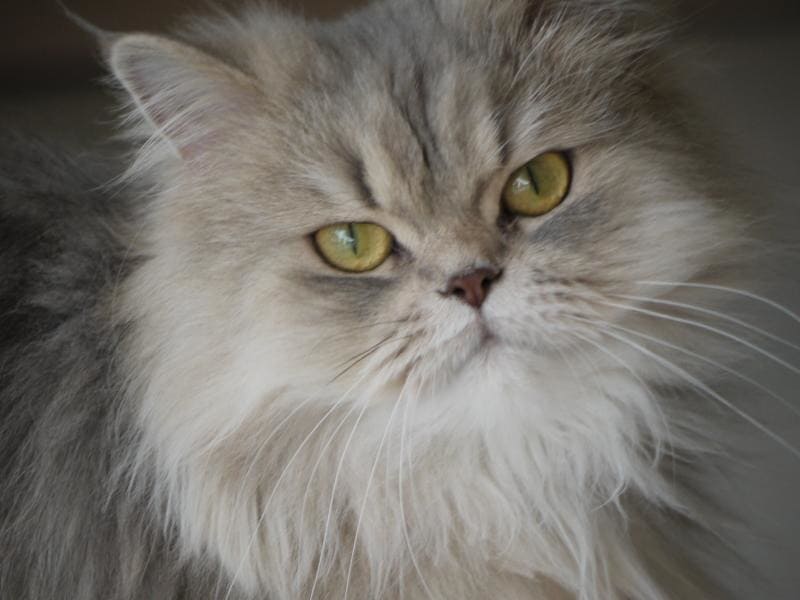
Handling Accidents and Bleeding: What to Do
Accidental Cutting of the Quick
Accidents can happen, even when you’re as careful as can be. If you accidentally cut your cat’s quick, you may notice bleeding and your cat may feel pain. Here’s what to do in such a situation:
1. Stay Calm
First, stay calm and try to keep your cat calm as well. Your pet can sense your stress, so it’s essential to maintain a soothing demeanor.
2. Apply Styptic Powder or Gel
Styptic powder or gel is your best friend in this scenario. Take a small amount and gently apply it to the bleeding claw. It helps to stop the bleeding and promotes quick clotting.
3. Use a Clean Cloth
In case you don’t have styptic powder, you can use a clean cloth or gauze to apply gentle pressure to the bleeding claw. This pressure can help stop the bleeding.
4. Monitor Your Cat
Keep an eye on your cat for a while to ensure that the bleeding has stopped. If the bleeding persists for an extended period, or if you notice signs of infection, contact your veterinarian.
Signs of Infection
It’s essential to watch for signs of infection after a bleeding incident. Infections can result from an open wound, even a small one on a cat’s claw. Look out for the following:
- Swelling
- Redness
- Discharge
- Limping or favoring the affected paw
- Loss of appetite
- Lethargy
If you notice any of these signs, consult your veterinarian promptly for proper treatment.
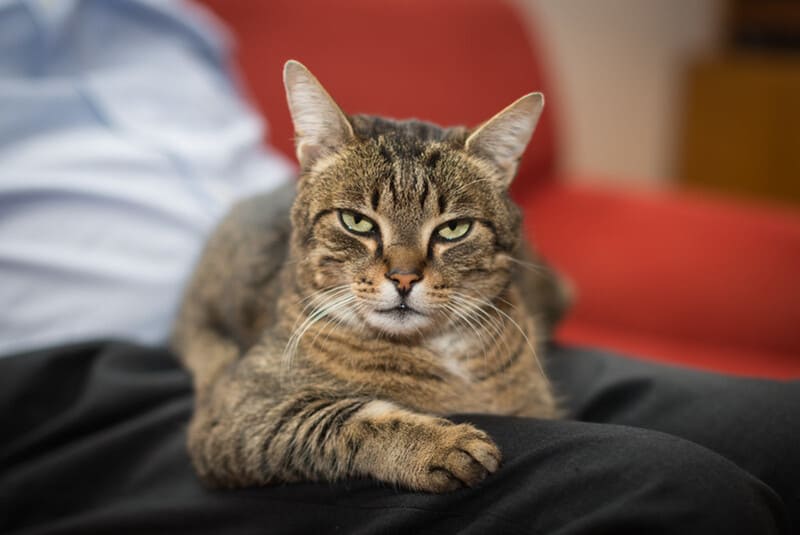
Maintaining a Regular Claw Care Routine
Proper claw maintenance isn’t a one-time task—it’s an ongoing process. Maintaining a regular claw care routine is crucial for your cat’s well-being and your furniture’s longevity. Here’s how to do it:
1. Regular Inspections
Frequent claw inspections are key. Check your cat’s claws at least once a week. Look for signs of overgrowth, splitting, or damage. Early detection allows you to address issues before they become problematic.
2. Consistent Trimming
Depending on your cat’s lifestyle and claw growth, establish a consistent trimming schedule. Most cats benefit from trimming every 2-4 weeks. Kittens and senior cats may require more frequent attention.
3. Positive Reinforcement
Make claw trimming a positive experience for your cat. Use treats and praise to reward them during and after the process. This positive reinforcement helps your cat associate trimming with something enjoyable.
4. Be Gentle
Always be gentle when handling your cat’s paws. Forcing the process or causing discomfort can create anxiety and make future trimmings more challenging.
5. Scratching Posts and Pads
Provide your cat with suitable scratching posts and pads. Cats scratch to maintain their claws and stretch their muscles. Having these alternatives can help prevent overgrowth and minimize the need for trimming.
6. Check for Outdoor Wear
If your cat spends time outdoors, their claws may wear down naturally due to climbing and hunting. However, it’s still essential to inspect their claws and provide occasional trimming if needed.
7. Health Check
Regular claw care routines also serve as an opportunity to check your cat’s overall paw health. Look for any signs of injury, infection, or lameness and address them promptly.
8. Professional Grooming
If you’re uncertain about how to trim your cat’s claws or your cat is highly resistant, consider professional grooming. Groomers and veterinarians are experienced in handling such situations and can ensure your cat’s claws are maintained correctly.
Maintaining a regular claw care routine is the key to keeping your cat comfortable and your home intact. With these practices in place, you’ll be well on your way to ensuring your feline friend’s paws are in top-notch condition.
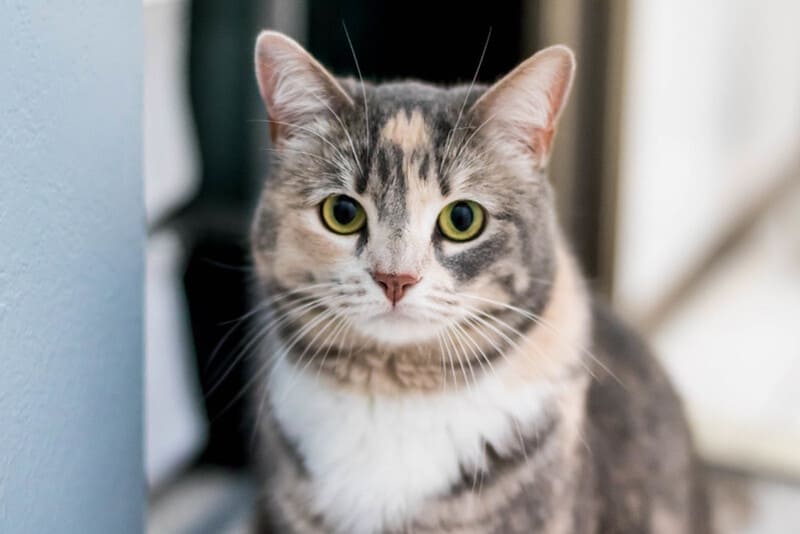
Alternative Solutions for Claw Maintenance
Cat Scratching Posts
Cat scratching posts are a fantastic alternative to manual claw trimming. These posts are designed to help cats naturally maintain their claws. The act of scratching helps remove the outer sheath of the claw, preventing overgrowth. Here’s how to make the most of them:
- Choose the Right Type: Scratching posts come in various shapes and materials. Consider your cat’s preferences, as some cats prefer vertical posts, while others like horizontal surfaces. Material options include sisal, cardboard, or carpet.
- Placement Matters: Place scratching posts in strategic locations where your cat likes to scratch. These could include near their favorite lounging spots or close to where they sleep.
- Positive Reinforcement: Encourage your cat to use the scratching post by placing treats or catnip on it. Reward your cat when they use it as intended.
Claw Covers
Claw covers, often referred to as “soft paws” or “nail caps,” are another alternative solution for claw maintenance. These soft, plastic caps are glued over your cat’s claws and provide protection to your furniture and skin. Here’s how to use them effectively:
- Proper Sizing: Ensure you choose the right size of claw covers for your cat. Follow the manufacturer’s guidelines for sizing.
- Safe Application: Apply the claw covers according to the provided instructions. Be careful not to apply them too tightly or obstruct the claw’s natural extension and retraction.
- Regular Maintenance: Claw covers typically last for about 4-6 weeks. Regularly check and replace any caps that have fallen off or become loose.
Scratching Pads and Mats
Scratching pads and mats offer a versatile and affordable way to help your cat maintain their claws. They are often made of corrugated cardboard, providing an ideal surface for scratching. Here’s how to use them effectively:
- Variety: Experiment with different types and shapes of scratching pads or mats to see what your cat prefers. Some even come with catnip to entice your feline friend.
- Strategic Placement: Place the pads or mats near areas where your cat tends to scratch, such as the back of the sofa or near door frames.
- Regular Replacement: These scratching surfaces have a limited lifespan. Replace them when they become worn or unattractive to your cat.
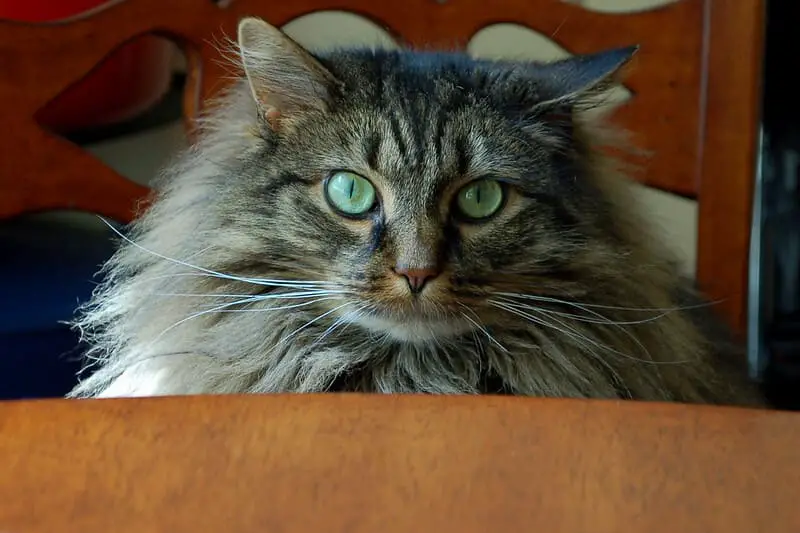
Seeking Professional Help When Necessary
When Should You Seek Professional Help?
While many cat owners can successfully maintain their cats’ claws at home, there are situations where professional help is necessary. Here are some scenarios where seeking the expertise of a veterinarian or groomer is a wise choice:
1. Extremely Resistant Cats
Some cats are exceptionally sensitive or resistant to having their claws trimmed. If your attempts at home lead to significant stress for your cat or are impossible due to their behavior, professional groomers have experience in handling such situations.
2. Medical Issues
Cats with medical conditions affecting their claws, such as ingrown claws or infections, should be seen by a veterinarian. Attempting to trim or maintain the claws in such cases may worsen the problem.
3. Overgrown Claws
If your cat’s claws have become severely overgrown, it’s essential to seek professional help. Overgrown claws can curl into the paw pads, leading to pain and infections. A professional can trim the claws safely and address any related issues.
4. Elderly Cats
Senior cats may have brittle or thickened claws that require special care. A veterinarian or groomer can provide the expertise needed to trim their claws without causing discomfort.
Choosing a Professional
When seeking professional help for your cat’s claw maintenance, consider the following:
- Vet or Groomer: You can choose either a veterinarian or a professional groomer. Veterinarians can address medical issues, while groomers are experts in pet grooming.
- Recommendations: Ask for recommendations from fellow cat owners or your veterinarian. Word-of-mouth can lead you to trusted professionals.
- Experience: Ensure the professional has experience with cats and is gentle in their approach.
- Safety and Comfort: The professional should prioritize the safety and comfort of your cat throughout the process.
By choosing the right professional, you can ensure that your cat’s claw maintenance is handled expertly and with the least amount of stress for your furry companion.
Conclusion
In conclusion, keeping your cat’s claws in top shape is essential for their well-being and your peace of mind. Whether you opt for regular trimming, explore alternative solutions, or seek professional help when needed, the key is to make claw care a positive and stress-free experience for your feline friend. By following the tips and steps outlined in this guide, you can ensure that your cat’s claws are a source of comfort and joy, rather than a cause of concern. Happy cats and intact furniture are just a few paw-licks away!
